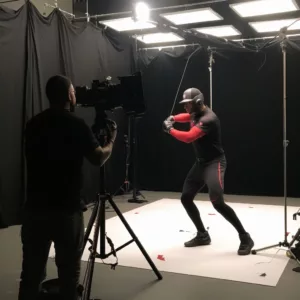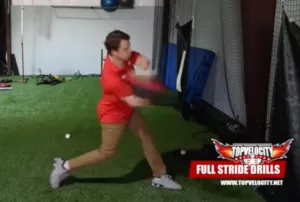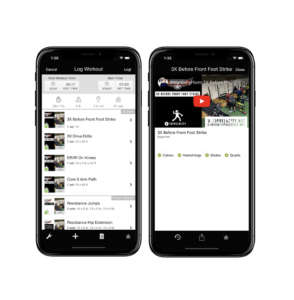 In the dynamic world of baseball, Developing a Baseball Hitting Approach is paramount for any player aspiring to elevate their game from good to great. The difference often lies in a robust, well-developed hitting approach that not only aligns with a player’s personal strengths but also adapts strategically to diverse pitching styles. This article delves deep into the intricacies of formulating a successful baseball hitting approach, providing practical tips and techniques designed to benefit players at every level of the sport.
In the dynamic world of baseball, Developing a Baseball Hitting Approach is paramount for any player aspiring to elevate their game from good to great. The difference often lies in a robust, well-developed hitting approach that not only aligns with a player’s personal strengths but also adapts strategically to diverse pitching styles. This article delves deep into the intricacies of formulating a successful baseball hitting approach, providing practical tips and techniques designed to benefit players at every level of the sport.
Our aim is to comprehensively equip players with the essential knowledge and skills required to enhance their hitting capabilities. By exploring various facets of hitting strategies—from understanding pitch types and pitcher tendencies to refining swing mechanics and mental focus—we strive to improve players' overall performance at the plate. Whether a beginner learning the ropes or a seasoned player seeking to refine their technique, our guide offers valuable insights and actionable advice to help every player achieve their hitting potential and contribute effectively to their team’s success.
Understanding the Basics of Developing a Baseball Hitting Approach
Understanding the fundamentals of hitting is crucial for any baseball player. At the core of these fundamentals is the concept of a hitting approach, which plays a pivotal role in a batter's performance during a game.
 What is a Hitting Approach?
What is a Hitting Approach?
A hitting approach is essentially a batter's game plan and mental framework as they prepare to face the pitcher. This approach encompasses a strategic understanding of how to respond to different pitches and situational play, tailored to leverage the batter’s strengths. It also requires an awareness of the pitcher's tendencies and patterns, allowing the batter to anticipate and react more effectively. By having a clear approach, the batter sets themselves up not just to hit, but to hit successfully according to the context of the game and their personal capabilities.
The Importance of Mindset in Hitting
The mental aspect of hitting cannot be underestimated. A positive and focused mindset is a powerful component of a batter’s approach, significantly influencing their performance. Confidence at the plate is more than just feeling good; it's a crucial factor that drives better decision-making and execution of the hit. When batters step up to the plate with confidence, they are more likely to trust their skills and their approach, leading to a higher chance of successfully hitting the ball. This confidence stems from thorough preparation, such as understanding the pitcher’s strategies and rigorously practicing one’s hitting mechanics.
A hitter's mindset also involves resilience and adaptability. Baseball is a game of failure and adjustment; even the best hitters will often fail more than they succeed. Therefore, maintaining a positive mindset helps players recover from setbacks and adapt their approach based on ongoing game dynamics and outcomes.
By mastering both the strategic and mental components of the hitting approach, players can significantly enhance their effectiveness and consistency at the plate. This dual focus not only improves individual performance but also contributes valuably to the team's overall success.
 Core Elements of a Developing a Baseball Hitting Approach
Core Elements of a Developing a Baseball Hitting Approach
1. Recognizing Pitch Patterns
- Study Pitchers: Analyzing pitchers' habits and patterns can provide hitters with a significant advantage.
- Anticipate Pitches: Being able to predict the type of pitch can help in selecting the right swing.
2. Situational Awareness
- Understanding Counts: Different strategies should be employed depending on the count.
- Runner Positions: Knowing where runners are can affect a hitter's choice of swing or contact.
3. Personal Strengths and Weaknesses
- Leverage Strengths: Hitters should know their best hitting zones and look for pitches in those areas.
- Improve Weaknesses: Regular practice in weaker areas can lead to more balanced hitting.
Advanced Techniques to Developing a Baseball Hitting Approach
 Introduction to GFT Hitting Mechanics
Introduction to GFT Hitting Mechanics
GFT Hitting Mechanics from the TopVelocity program emphasize maximizing bat power through precise biomechanical sequences and ground force utilization. Understanding and implementing these advanced techniques can dramatically enhance a player's hitting performance by ensuring optimal energy transfer and efficiency in each swing.
Key Components of GFT Hitting Mechanics
1. Ground Force Production
- Back Leg Loading: The foundation of powerful hitting starts with the back leg, which generates significant force through a combination of extension and rotation. This force is crucial for initiating the kinetic chain that leads to a powerful swing .
- Front Leg Timing and Stability: As the front leg plants and stabilizes, it supports the rotational forces generated by the back leg, enabling the hips and trunk to rotate with maximum power .
2. Optimal Upper Body Sequencing
- Core Tension and Shoulder Separation: The separation between the hips and shoulders builds torsional tension through the core. This stored energy is then explosively released as the shoulders begin to rotate, following the hips, which enhances bat speed and control .
- Top Hand Elbow and Trunk Engagement: The engagement of the top hand elbow with the back hip is critical. As the elbow drops, it connects to the power generated from the lower body, aligning the trunk to drive the bat through a linear path towards the ball .
3. Linear Bat Path Optimization
- Guiding the Bat: The role of the bottom hand is crucial in guiding the bat along a linear path. This ensures that the bat stays in the hitting zone longer, increasing the chances of making solid contact with the ball .
- Pivot Point Stability: Maintaining head stability as a pivot point is essential. It allows the shoulders to rotate effectively around a stable axis, focusing the eyes and concentration on the ball and barrel contact .
4. Integration of Biomechanics with Video Analysis
- Feedback and Adjustments: GFT Hitting Mechanics strongly advocate for the use of video analysis to remove guesswork. By capturing and analyzing side-view footage of hitting mechanics, players can identify and refine their swings with precision .
Conclusion
By integrating the GFT Hitting Mechanics into their training regimen, hitters can achieve a more potent and technically sound swing. The focus on leveraging ground force production, optimizing upper body sequencing, and maintaining a linear bat path are fundamental in transforming good hitters into great ones. Practicing these advanced techniques with proper guidance and feedback will lead to noticeable improvements in batting performance and consistency.
These advanced strategies, rooted in the scientific understanding of biomechanics, offer a clear pathway to enhancing batting skills through structured and informed practice.
 Drills and Exercises for Developing a Baseball Hitting Approach
Drills and Exercises for Developing a Baseball Hitting Approach
Incorporating the GFT (Ground Force Training) Hitting Drills into your training regimen is essential for developing a powerful and effective hitting technique. These drills, part of the TopVelocity program, are designed to enhance your hitting by emphasizing ground force production, torsion, and dynamic movement that translate directly into game performance. Here's a breakdown of key drills and how to execute them effectively:
1. GFT Med Ball Drills
These drills utilize a 2lb medicine ball to mimic the hitting motion, focusing on developing power from the ground up.
- Linear On Knee: Performed with the athlete on one knee to focus on upper body mechanics and torso rotation.
- Linear Full Stride: Incorporates a full stride, transitioning from a dynamic start to simulate a game-like swing.
- Linear Momentum: Focuses on generating momentum through a continuous movement pattern to improve power transfer.
2. GFT Hitting Drills
These are performed with a bat and are crucial for integrating the mechanics practiced in the Med Ball Drills into actual swinging.
- Torsion On Knee: This drill emphasizes rotational power while maintaining stability on one knee, enhancing core and hip engagement.
- Torsion Full Stride: Similar to the Linear Full Stride, but with an added focus on torsion throughout the body.
- Torsion Momentum: Encourages the hitter to generate and control momentum through the swing phase, crucial for game situations.
 Weekly Routine and Progression
Weekly Routine and Progression
The program outlines a structured routine that gradually increases in intensity and complexity over a period of weeks, allowing for adaptation and mastery of each component:
- Weeks 1-4: Introduction to basic movements and focusing on form and technique with lower repetition ranges.
- Weeks 5-8: Increase in repetitions and introduction of more complex movements as proficiency improves.
Key Tools and Equipment
- 2lb Med Ball: Essential for performing the Med Ball Drills, available for purchase through the TopVelocity website.
- Bat and Hitting Tee: Fundamental for all hitting drills, ensuring that techniques learned can be directly applied to hitting scenarios.
- King of the Swing: Provides feedback on ground force application and helps in refining the swing mechanics.
Self-Coaching and Video Analysis
It is highly recommended that athletes record their drills and analyze their videos to self-coach. This approach helps in identifying areas of improvement and ensuring that the techniques align with the ideal mechanics described in the GFT Hitting Mechanics section .
By integrating these GFT Hitting Drills into your training, you commit to a scientific approach that enhances your hitting performance through focused, repetitive practice of biomechanically sound movements. These drills are designed not only to improve your current skills but also to build foundational strength and coordination that will benefit your long-term development as a hitter.
 Purchase the GFT Hitting Program NOW!
Purchase the GFT Hitting Program NOW!
Ready to transform your game and become a powerhouse at the plate? Don’t wait any longer—elevate your hitting skills with the GFT Hitting Program from TopVelocity. Tailored to harness the full potential of every swing, our program leverages proven scientific methods and cutting-edge technology to enhance your performance. Whether you're just starting out or looking to refine your technique, the GFT Hitting Program is your key to unlocking explosive power and precision.
Visit us now at topvelocity.net/gft to learn more and get started today. Join the ranks of elite hitters who have already begun their journey to greatness with TopVelocity. Step up to the plate with confidence—invest in your hitting success now!
Incorporating Technology When Developing a Baseball Hitting Approach
 Incorporating technology into baseball training has become a game-changer for coaches and players aiming to maximize their performance. By leveraging advanced tools and software, athletes can gain insights into their techniques that were previously impossible to obtain through traditional methods alone. Here’s how technology is transforming baseball training:
Incorporating technology into baseball training has become a game-changer for coaches and players aiming to maximize their performance. By leveraging advanced tools and software, athletes can gain insights into their techniques that were previously impossible to obtain through traditional methods alone. Here’s how technology is transforming baseball training:
- High-Speed Cameras and Video Analysis: High-speed cameras capture details that are invisible to the naked eye during the rapid movements of hitting or pitching. Video analysis software can slow down these movements, allowing coaches and players to scrutinize every aspect of a swing or pitch. This detailed analysis helps in identifying inefficiencies and areas for improvement, making it possible to fine-tune mechanics for optimal performance.
- Wearable Technology: Wearable sensors can track a player's movements, providing real-time data on aspects such as swing speed, bat angle, and body mechanics. This data helps in understanding how different body parts coordinate during a swing and can guide athletes in making adjustments to enhance power and accuracy.
- Radar Technology: Devices like radar guns are not just for measuring pitch speed anymore. They can also analyze hitting power, providing immediate feedback on how changes in swing mechanics affect the ball’s velocity off the bat. This instant feedback is invaluable for making quick adjustments during practice sessions.
- Virtual Reality (VR) and Simulation: Virtual reality technology allows players to simulate at-bats against virtual pitchers, offering a realistic and controlled environment for practice. VR helps hitters work on their timing and pitch recognition skills without the wear and tear of live pitching. Additionally, VR can be programmed to replicate specific pitchers, allowing hitters to prepare for upcoming games against difficult opponents.
- Data Analytics and Machine Learning: Teams are increasingly using data analytics and machine learning to predict outcomes, personalize training programs, and optimize game strategies. By analyzing vast amounts of data collected from practices and games, these tools can uncover patterns and insights that help coaches make informed decisions about player development and game tactics.
- Mobile Apps and Online Platforms: Mobile apps and online platforms facilitate remote coaching, where players can receive personalized feedback from their coaches. These tools often include features like video uploading, annotation for feedback, and communication tools, making it easier than ever for players to stay connected with their coaches and continue improving, regardless of their location.
Incorporating technology into baseball training not only enhances the learning and development process but also provides a competitive edge in this increasingly data-driven sport. As technology continues to evolve, its integration into sports training will likely deepen, offering even more innovative ways to boost athletic performance.
FAQs: Developing a Baseball Hitting Approach
What is the most important aspect of a hitting approach?
The cornerstone of any effective hitting approach lies in having a well-formulated plan tailored to an individual's unique strengths and weaknesses. This plan is rooted in thorough preparation, which includes studying pitchers, understanding the strategic nuances of different game situations, and rigorous self-assessment. By knowing what works best for oneself under varying circumstances, a hitter can step up to the plate with confidence and a clear strategy, thereby maximizing their potential for success.
How often should I practice my hitting approach?
Consistency is key in mastering any skill, and hitting in baseball is no exception. Regular practice, ideally on a daily basis, is essential not only for honing one's skills but also for maintaining mental sharpness. Each practice session provides an opportunity to reinforce good habits, tweak mechanics, and improve decision-making at the plate. Frequent repetition ensures that the proper techniques become second nature, allowing the hitter to react instinctively and effectively during games.
Can technology really help improve my hitting?
Absolutely, technology has become a fundamental element in modern sports training, including baseball. Tools like high-speed video analysis allow players and coaches to break down swings in super slow motion, offering insights that are critical for fine-tuning swing mechanics. This technology can highlight subtle issues that may not be visible at normal speed, providing actionable feedback that leads to improved accuracy and power. Additionally, other technological aids like swing sensors and radar devices can offer real-time data on swing speed, bat path, and other critical metrics, facilitating immediate adjustments.
What should I focus on if I’m just starting out?
For newcomers to baseball, it's important to build a solid foundation by focusing on the basics of hitting. This includes:
- Stance: Establishing a comfortable and balanced batting stance that allows for optimal movement and power generation.
- Swing Mechanics: Learning the correct technique for swinging the bat, which involves understanding the kinetics of one’s body, from foot placement and hip rotation to hand path and follow-through.
- Eye Tracking: Developing the ability to track the ball from the pitcher's hand to the point of contact, which is crucial for timing and accuracy.
Mastering these fundamentals will provide a strong platform upon which advanced skills can be developed.
How can I stay mentally strong at the plate?
Staying mentally strong at the plate is vital for consistent performance. Developing pre-bat routines can help in this regard, as they enable the hitter to focus and calm their mind before facing a pitch. Techniques such as visualization and mindfulness are also incredibly beneficial. Visualization involves imagining successful at-bats and seeing oneself executing perfectly, which can boost confidence and reduce anxiety. Mindfulness, on the other hand, helps maintain a present focus, allowing hitters to stay calm and react adaptively to each pitch. Together, these practices enhance mental resilience, helping players remain focused and undeterred by setbacks during games.
For more exclusive content visit TopVelocity Patreon!


 What is a Hitting Approach?
What is a Hitting Approach? Core Elements of a Developing a Baseball Hitting Approach
Core Elements of a Developing a Baseball Hitting Approach Introduction to GFT Hitting Mechanics
Introduction to GFT Hitting Mechanics Drills and Exercises for Developing a Baseball Hitting Approach
Drills and Exercises for Developing a Baseball Hitting Approach Weekly Routine and Progression
Weekly Routine and Progression Purchase the GFT Hitting Program NOW!
Purchase the GFT Hitting Program NOW!